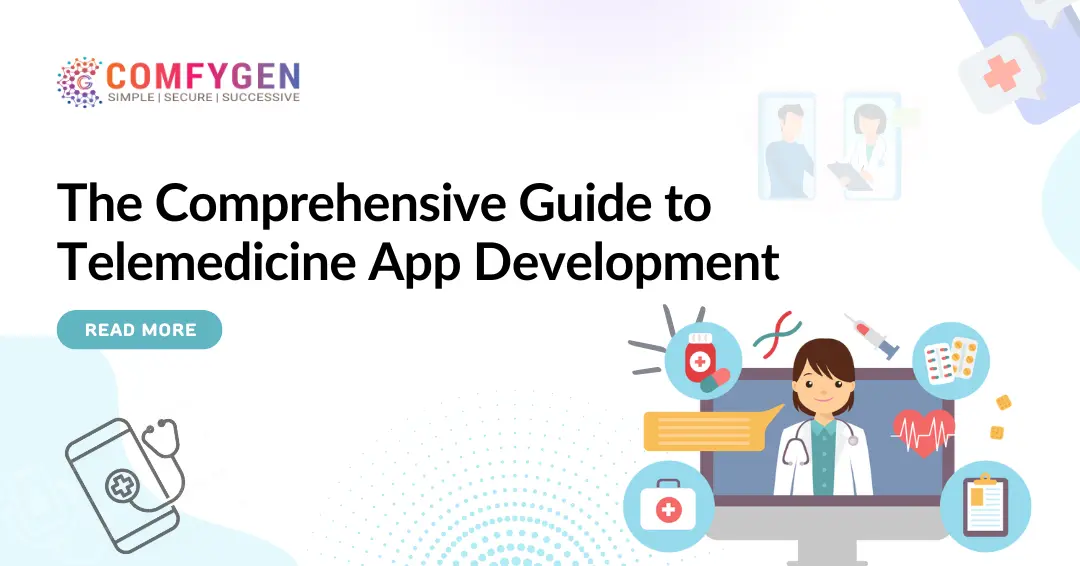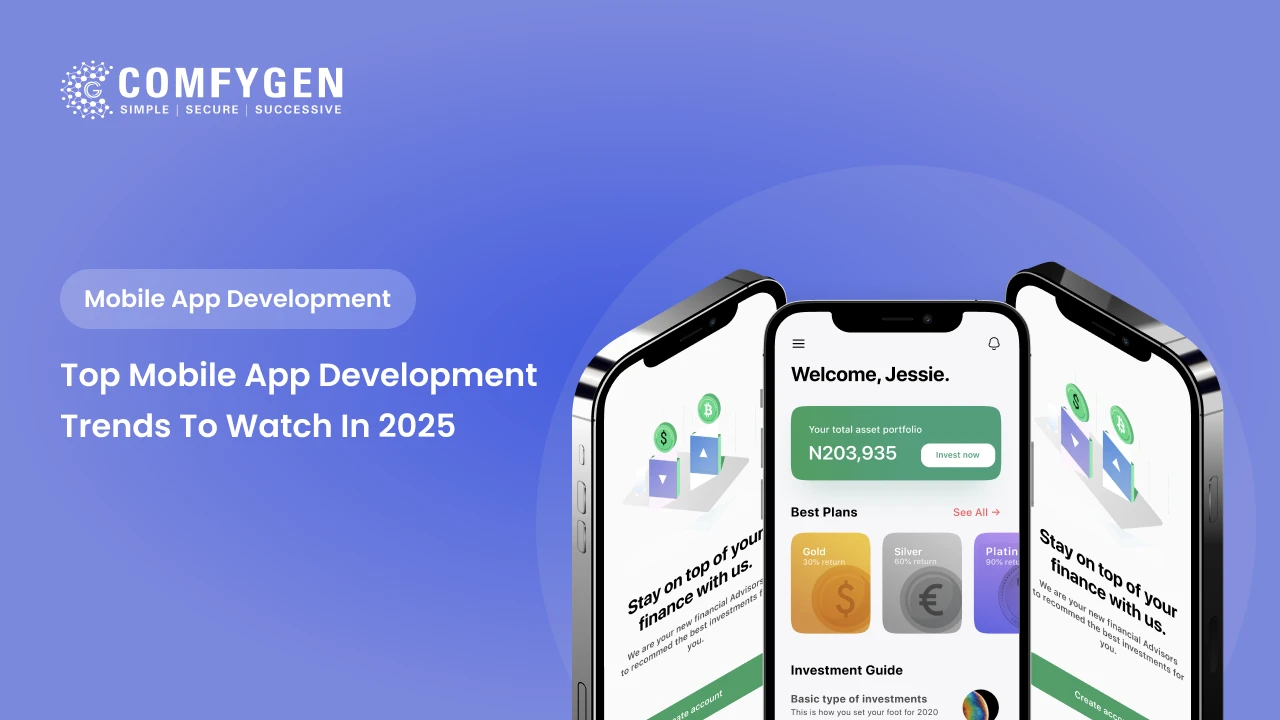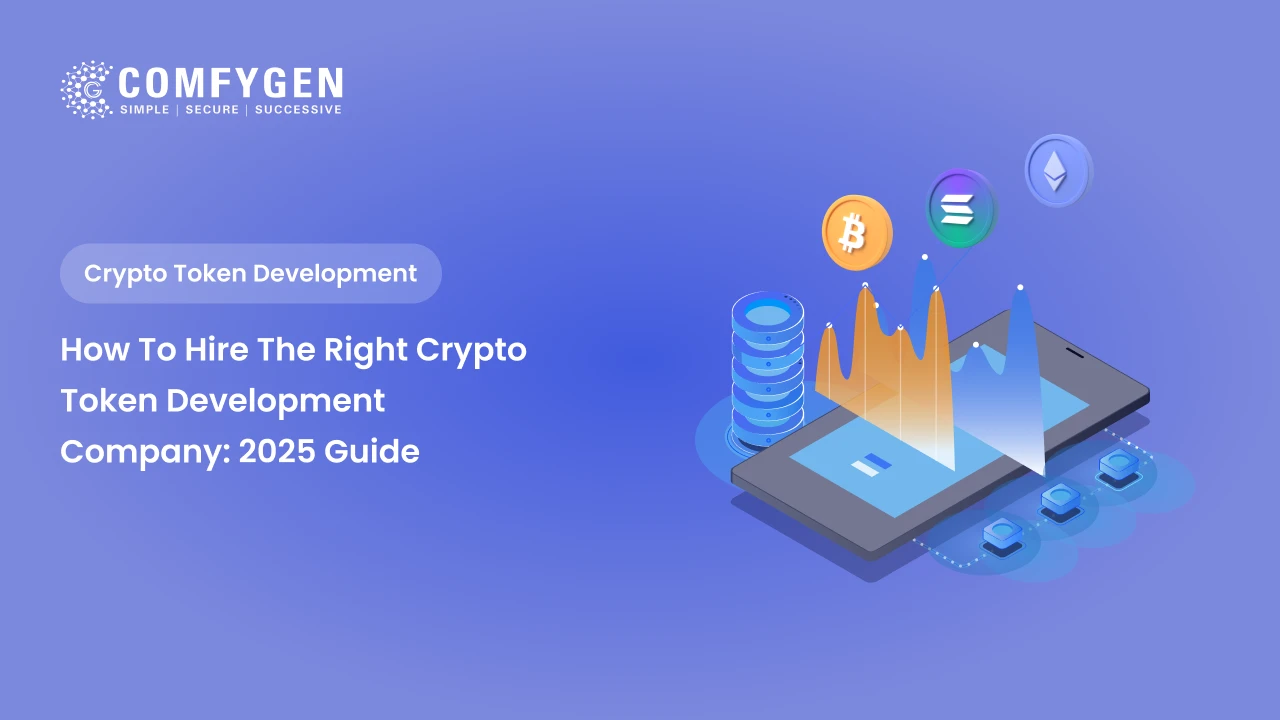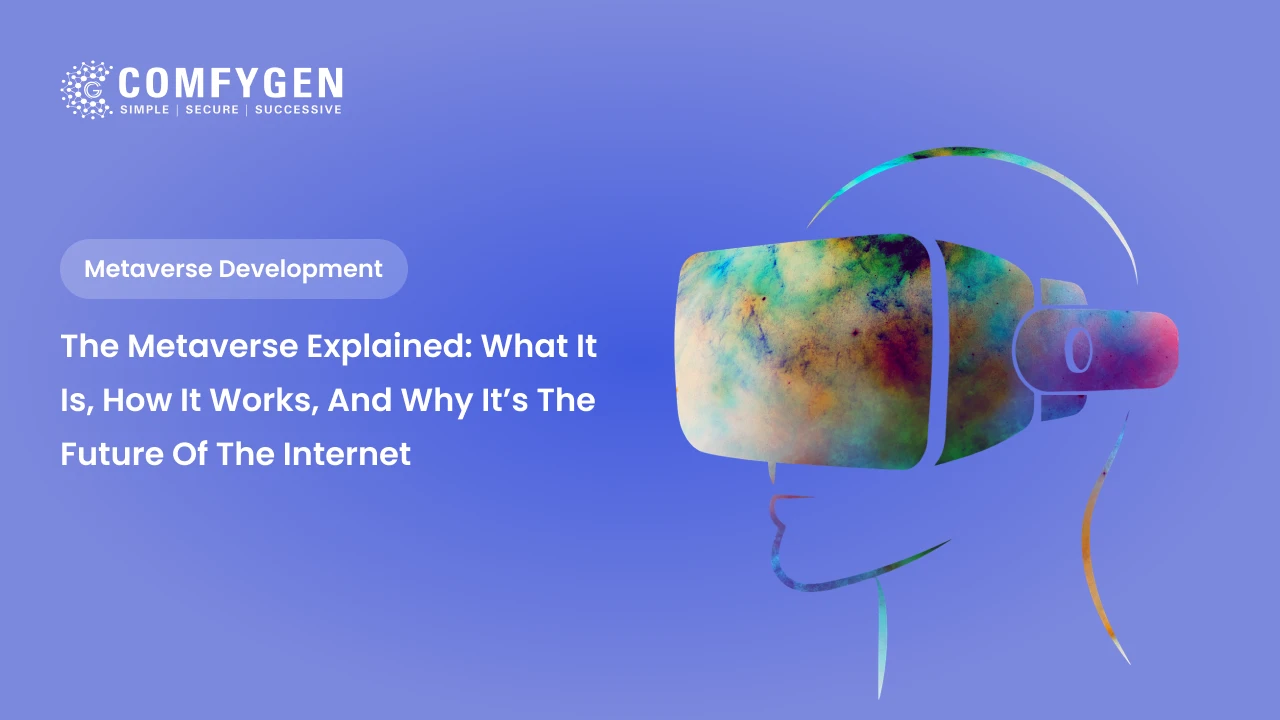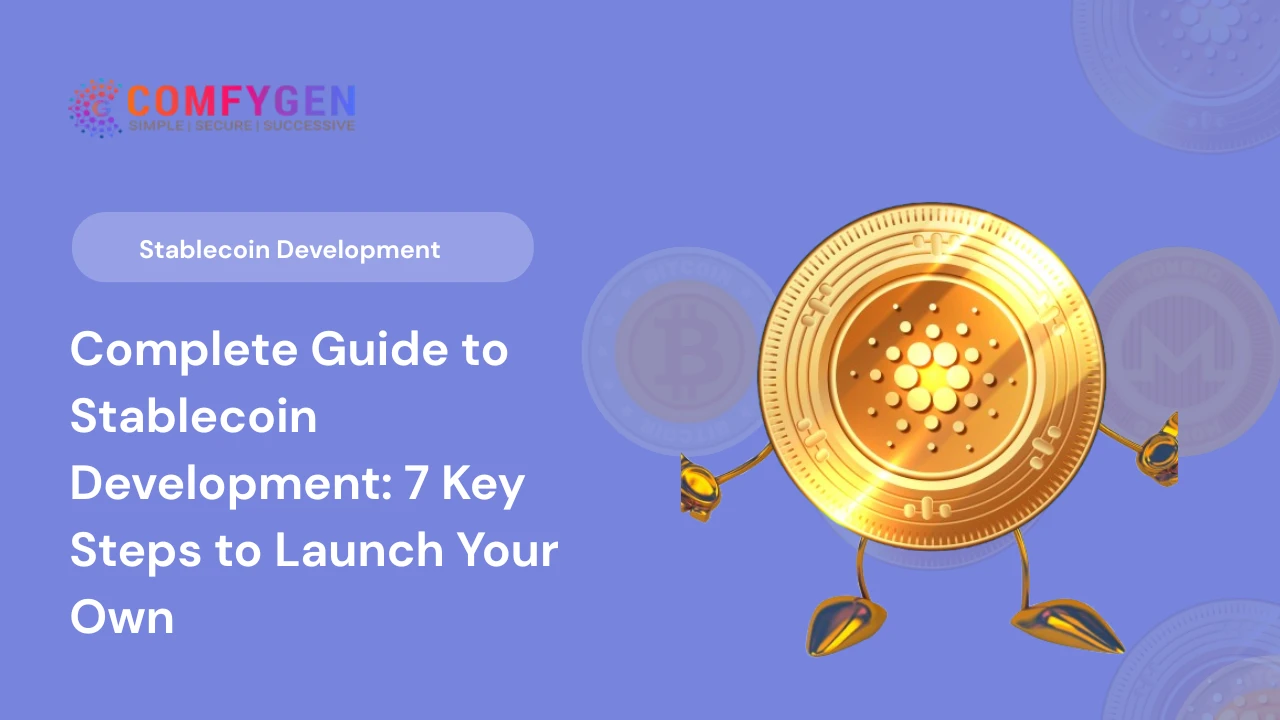The Comprehensive Guide To Telemedicine App Development
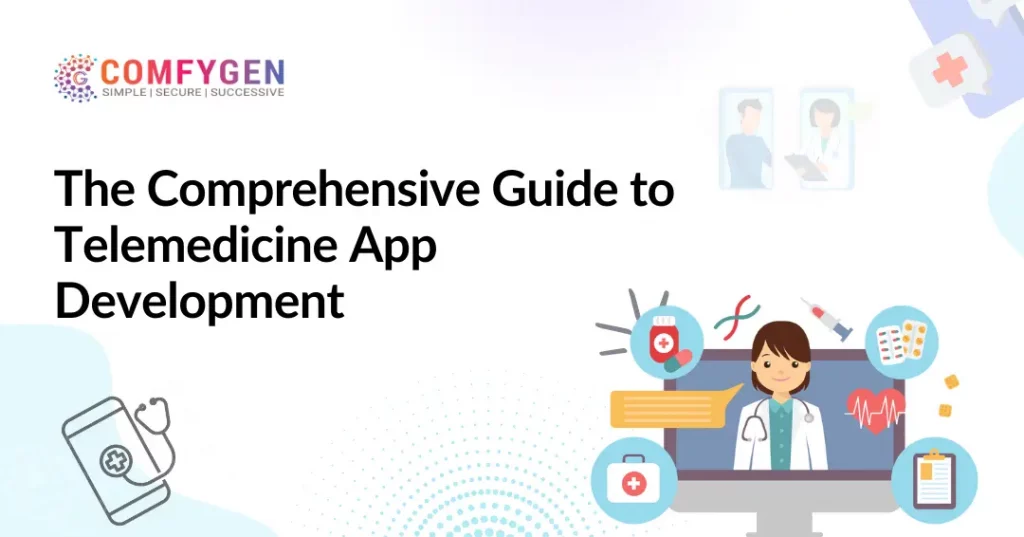
Since 2020, healthcare industry access has undergone a significant transformation largely because of the origination of telemedicine applications. In the charming new field of Telemedicine App offer medical care without leaving the comforts of house. It is the intersection of technology and medication.
Startups within the healthcare sector who need to offer digital medical offerings might use Telemedicine App as a tool to provide effective solution. Telemedicine Apps assist startups in overcoming the barriers associated with medical practice.
Through the facilitation of diagnosis, treatment, and communication among patients and providers, Apps enable startups to provide better healthcare
With this progress, healthcare Industry has become more accessible, cost-effective, and suitable than ever before. Patients can now access medical treatment on-demand, regardless of their location or the time of day.
In this guide, we will know currently available app and features in the market you need to design for your telemedicine app development company for the highest chances of success.
What Is A Telemedicine App And How Does It Work?
Telemedicine apps allow patients to consult health service providers via video call, messaging, or voice call. It provides medical confirmation, treatment and prescription services without the need to meet in person. Patients can schedule appointments, share medical history and symptoms, get advice, and even get prescriptions electronically. Health service providers use security platforms to communicate with patients, ensure confidentiality, and follow health service regulations like HIPAA. Telemedicine app enhances the value of healthcare by bridging geographical obstacles and providing convenient, timely medical care from anywhere with internet access.
Overview Of Telemedicine App Development
Envision a world in which you could do a self-health test, take your blood pressure, and submit the data to your health practitioner with a touch of a button. Your medical doctor will then decide what medicines you need and whether you need to go to the health facility for additional checking. By creating Telemedicine Apps, healthcare startups can make this a reality. Telemedicine app development includes the development of Android, iOS, and web platforms suitable for health service providers, which provide the facility of services like telemedicine and e-pharmacy development.
The main goal of Telemedicine is to use technology to improve conventional healthcare and lower the cost of healthcare for every person, anywhere. Here are some advantages a Telemedicine App offers:
- Access to therapy and other minor health issues
- Monitor physical health issues
- Request or renew prescriptions for medicines
- Assess and treatment for minor health conditions
- Online chat messaging and video conferences with doctors.
Market Statistics of Telemedicine App
The global telemedicine market has experienced strong growth, increasing from an assessment of USD 94.02 billion in 2022 to an estimated USD 510.74 billion by 2032, representing a projected CAGR of 18.44% from 2023 to 2032.
This expansion is inspired by the increasing demand for remote health service solutions, progress in production, increasing cost of health services, increasing demand for smartphones and the necessity of accessible health services in remote and small service fields.
Estimates indicate continued growth, with the market estimated to reach USD 559.52 billion by 2027, growing at a CAGR of approximately 25.2% from 2020 to 2027, highlighting its important role in the modern healthcare delivery system.
Key Considerations For Developing A Telemedicine Application
You can take into account the following when developing a Telehealth App:
- Compliance with Regulations
Telemedicine applications must follow strict rules like HIPAA (Health Insurance Portability and Accountability Act) in the United States of America to make sure the privacy and security of patient data. Conformity to these rules is important to create trust between users and avoid legal effects.
- Security and Privacy
Implementing strong security measures which include data encryption, secure certification and conformity with privacy regulations is important to protect medical information. A secure telemedicine app development company is important to maintain the privacy and trust of the patient.
- User-Friendly Interface and Experience
A simple and user-friendly interface design is important for the telemedicine application success. It is important to make the app easy to navigate, with clear instructions on scheduling appointments, accessing medical records, and participating in video consultations. A simple user experience increases the patient’s well-being and satisfaction.
Read More: A Complete Guide on Doctor Appointment App Development
- Integration with Electronic Health Records (EHR) Systems
Integrating with an EHR system enables healthcare data providers to access and update patient records in real time, which facilitates continuity of care and decision-making.
- Telemedicine Technology Stack
Choosing the appropriate technology stack, including video conferencing tools, and secure messaging platforms, is important to make sure efficient teleconsultation and effective communication between patients and healthcare data.
- Scalability and Performance
Anticipating future growth and ensuring the scalability and performance of the telemedicine application is important to accommodate a growing user base and to increase speed and productivity Should be able to handle growing usage without being reliable.
- Mobile Compatibility and Cross-Platform Functionality
Considering the operation of mobile services, it is important to develop a telemedicine application that is compatible with different platforms and services. Ensuring a common user experience on both web and mobile app development platforms increases the ease and convenience for users.
- Telemedicine Reimbursement and Billing Integration
Integrating billing and reimbursement functions in a telemedicine application streamlines the finer aspects of virtual healthcare services, which allows for the payment process and presenting insurance claims.
- Telemedicine App Marketing and Adoption
It is important to develop a comprehensive strategy for app marketing and user adoption. Patients and health services are informed about the benefits of telemedicine. Communicating data and promoting the app through targeted channels is essential to grow your business and your users.
- Ongoing Maintenance and Support
Continued maintenance, updates and technical support are essential for the long-term success of the telemedicine application. Monitoring performance, addressing user feedback and staying updated with technological advancements is important to ensure the reliability of the app.
- Large-scale data
In addition to reliably and securely managing data, the App should be able to do actual-time records analytics.
- Database with Backend Support
Uniform records exchanges among physicians and patients are made possible with the backend process.
Also Read: The Comprehensive Guide to Healthcare App Development
Detail Guide To Develop A Telemedicine App
Developing a telemedicine app involves a multi-step process that includes careful planning, thorough development, rigorous testing, and ongoing maintenance. Here’s a detailed guide to help you through each phase:
Initiation
- Project capability and business analysis: User characters, User Stories, and Customer Journey Maps are developed, competitors are analyzed, and the target market is identified.
- Software requirements: This includes defining industry standards, industry laws, and requirements for the Telemedicine App.
- Prioritizing functions: A listing of vital features for customers (patients) and business users (doctors) is compiled.
Planning and Architecture Design
- Customer experience: Creating an exquisite consumer experience calls for recreating the Application’s core logic. It included dispensing functionality across screens, and organising logical hyperlinks between screens. Custom scripts and a purchaser route are used to carry it out.
- Design: Utilising the brand book as a guide, all screens and graphic interface components (buttons, icons, logos, typefaces, and animations) are rendered to create a consumer-friendly App.
Technology stack
|
Aspect |
Technologies |
|
Front-end |
React Native, Flutter |
|
Back-end |
Node.js, Django, Ruby on Rails |
|
Database |
PostgreSQL, MongoDB |
|
API |
REST, GraphQL |
|
UI/UX Design |
Adobe XD, Sketch, Figma |
|
Security |
SSL/TLS, OAuth, JWT |
Development and Testing
- Development: The telemedicine app development consists of building the architecture, building an admin panel, configuring the logging systems, deploying and setting up the screens and animations, setting up logic and API functionality, and tailoring the Android app and iOS app platforms.
- Testing: Using procedures for quality assurance and control, as well as bug fixing, these strategies become aware of and do away with defects and inconsistencies.
Security
Security is very important in telemedicine apps, which includes encryption to protect patient data, security certification methods, and compliance with health service regulations like HIPAA. These measures make sure that sensitive health information remains confidential and secure, random leaks are prevented, and trust is maintained between patients and health service providers.
Installation and Maintenance
- Launch and Keep Updating the App: After all of the requirements are met, your App is ready for launch and list in App shops. Sustaining the App’s fulfillment calls for regular updates.
- Assure a seamless server deployment.
- Schedule frequent upgrades to correspond with modifications to iOS and Android.
Want to Develop Best Telemedicine Mobile Application?
Challenges In Telemedicine App Development
Telemedicine app development can ensure regulatory compliance like HIPAA, GDPR, ensure the security of user data and privacy, provide reliable real-time communication, provide seamless user experience on multiple platforms and maintain stable network connectivity for users at different places. These are the challenges. Whose niche has been explained well.
- Compliance with Regulations
Accepting to healthcare regulations is an important challenge in telemedicine app development. These regulations, like HIPAA in the US and GDPR in Europe, instruct strict guidelines for data security, patient privacy and security communications. Ongoing monitoring is required to make sure compliance and to keep up to date with any changes to the legal requirements.
- Data and User Security
It is important to protect patient information from unauthorized access. Telemedicine apps handle very big amounts of personal and medical data, making them prime targets for cyber attacks. It is important to implement strong encryption methods, secure authentication protocols and regular security inspections to maintain data security and user trust.
- Real-Time Communication
Providing reliable and high-quality real-time communication for video and audio consultation is a technology challenge. Issues like latency, poor video quality and dropped connections can obstruct the effectiveness of telemedicine app development services. Using advanced technologies like WebRTC and optimizing server infrastructure can help minimize problems and make sure smooth communications.
- HIPAA and GDPR Compliance
HIPAA and GDPR compliance requires extensive calculations to make sure the security and confidentiality of patient data. It includes end-to-end encryption, secure data stores and strict access controls. Non-compliance can result in heavy fines and legal consequences, making it important for developers to carefully implement these requirements.
- User Experience
Creating a user-friendly and attractive interface is important for the success of a telemedicine app. The app should take into account all the age and technology limitations of the users, to make sure that navigation is as easy as possible. Conducting user research and practical testing can help identify points and improve the overall user experience.
- Multi-Platform Support
This makes sure that the app works perfectly on different platforms. Every platform has its own design guidelines and technology specifications. By using a cross-platform development framework like Flutter or react native, the process can be streamlined and can be kept consistent across all devices.
- Network Connectivity
Telemedicine app development services depend heavily on internet connectivity. Users in areas with heavy or low service may face connectivity issues, impacting the quality of advice. You can get help by tuning the offline mode, data synchronization and error-handling mechanism, managing connectivity issues and Make sure that your delivery continues.
Also Read: The Comprehensive Guide To Medicine Delivery App Development
Benefits of Telemedicine App Development
The benefits of Telemedicine App development can be divided into benefits for patients and benefits for doctors.
Telemedicine App Development for Patients
- Speedier Resolutions
When a patient has minor health conditions like a cold or fever, those Apps are useful. Using phones, patients can talk to the health practitioner and get the right medicine in a matter of minutes. This eliminates the need to travel and spend time waiting in hospitals.
- More Practical
The aim of the Telemedicine App is to make patients’ lives easy. When you are ill, there is no need to use energy on the journey. For the right medicine, you could give your doctor a call. You can complete the proper paperwork through the App without having to go across the health facility.
- Simple Methods to Reach Experts
Not every expert can be accessible at the hospital in your town or in the surrounding area. Therefore, in order to get treatment for certain illnesses, you might need to travel to a distant region. These Apps allow you to talk with any form of specialist you would really like to see.
- Better Satisfaction
Getting satisfied is one of the important advantages of the use of Telemedicine Applications. With the doctor, you can discuss all matters related to health and get answers. You can also get admission to services 24/7 with Telemedicine app development services.
- Time Savings
Telemedicine app development benefits patients in a significant way. Instead of traveling to clinics or hospitals, patients can consult health service providers comfortably in their homes. This reduces the waiting time and saves their time. Medical advice and treatment is available quickly, which provides the benefit of more efficient and convenient health services.
Also Read: Benefits of Doctor Appointment Booking App Development
Telemedicine App Development for Doctors
- Efficient Monitoring
Applications for telehealth need to have a robust tracking framework. and with this doctors can take note of every patient as the App has data on the complete medical history of the patient. The capacity to get past medical records of patients helps doctors to follow up.
- Broad Patient Reach
Since some doctors specialize in a field that is not easily available in all areas. To serve patients in remote areas, doctor appointment app development solutions are provided.
- Enhanced Procedure Effectiveness
The App improves the doctor’s decision-making process as it records every small detail of the patient. As doctors do need to see the patients physically it saves lots of energy for doctors
- Time-Efficient
The doctor can save lot of time with the use of Apps and essential procedures linked to past visits. When the session starts, the data is shared between the health practitioners in the App.
Read More: Pros And Cons of Doctor Appointment App Development
Telemedicine App Development Features
Telemedicine app development features include user registration, appointment scheduling, video conferencing, security in-app-messaging, e-prescription, medical record management, payment integration, monitoring, geolocation, health monitoring, analytics, Feedback system, emergency services and compliance with secure rules like HIPAA and GDPR are included.
- User Registration and Profiles
User registration and profile are necessary for the telemedicine app. These features allow both patients and healthcare providers to sign up and create detailed profiles. Patients can include personal information, medical history and medical history, while providers can list their qualifications, expertise and professional hours achieved. Security authentication methods like e-mail, phone, number and social media accounts are important to make sure user data privacy and security.
- Appointment Scheduling
Appointment scheduling is an important feature that allows patients to easily book, schedule, or schedule appointments with health care providers. The schedule should include a calendar display that shows available time slots for every provider. Healthy reminders and reminders help reduce no-shows and keep both patients and providers mindful of upcoming appointments. Integration with personalized calendars can further obstruct users’ convenience.
- Video Conferencing High-quality
video conferencing is the foundation of telemedicine. This facility provides real-time video transmission, which allows the patient and the doctor to sit in the same room. The technology must support specific audio and video, low latency and security data transmission. Options like screen sharing and recording can hinder the Pramarsh experience. Using APIs like WebRTC, Agora or Twilio ensures strong performance.
- In-app chat and Messaging
In-app chat and messaging provide a secure channel for text communication between patients and health service providers. This feature is useful for providing help with follow-up questions, sending test results or consulting. Secure, encrypted messaging ensures patient privacy. The ability to save chat keys and documents such as multimedia files can also be valuable for diagnosis and treatment.
- E-Prescriptions
E-prescriptions smooth the process of issuing and managing prescriptions. Health service providers can create electronic prescriptions and send them directly to pharmacies or patients’ accounts using the app. Its features should include a prescription template, digital signature and secure transmission method. Integration with the pharmacy system can enable direct order fulfillment, which can improve convenience for patients.
- Medical Records Management
Medical records management is important to securely store and access patient’s health data. Patients can upload and view their medical documents, lab reports and previous consultation notes. The providers can access the records for consultation to ensure that such a decision is taken. Integration with electronic health record systems enables seamless data exchange and ensures that records remain intact.
- Payment Integration
Payment integration provides the feature of secure and convenient payment processing for telemedicine services. The app should support payment options including credit/debit cards, digital wallets and insurance claims. Automated invoices and transaction history help users track their payments. Ensuring compliance with payment secure standards such as PCI DSS is important to protect users’ financial data.
- Notification and Reminders
Notifications and reminders keep users busy and happy. Patients receive reminders for upcoming appointments, medication schedules and follow-up consultations. Providers receive alerts for new appointment bookings and cancellations. Push notifications and in-app alerts ensure timely communication and help users follow their health service plans.
- Geolocation and Navigation
Geolocation and navigation features help users find nearby health service features or providers. This is especially useful for patients who require individualized follow-up or emergency services. Integration with mapping services like Google Maps can provide directions and approximate time, which increases the convenience and reach of users.
- Health Monitoring and Wearable Integration
Integration with wearable devices allows real-time health monitoring. Users can sing data from devices such as smartwatches or fitness trackers to track vital signs such as heart rate, blood pressure and glucose levels. This data can be shared with health service providers for continued monitoring and proactive health management. The app can generate health reports and alert users and providers about any important changes.
- Multi-Language Support
Multi-language support widens the reach of the app to users from different linguistic backgrounds. Providing language options for registration and translating app content ensures wider reach and a better user experience. Multilingual customer help is further hurting the satisfaction and inclusion of users.
- Analytics and Reporting
Analytics and reporting provide a valuable need for health service providers and app administrators. Providers can access patient participation metrics, follow-up statistics and health outcome reports. Businesses can track app usage, identify trends, and make data-driven decisions to improve services. This information helps optimize app performance and improve user experience.
- Feedback and Reviews
Feedback and reviews allow patients to share their personal experiences and rate healthcare providers. This feature improves transparency and helps in maintaining high Gunvatta says. Providers can answer questions, address concerns and improve patient relationships. The aggregated practice data can guide app improvement and providers’ training programs.
- Emergency Services
Emergency services make sure that users get immediate medical help as quickly as possible. Emergency contact buttons that allow you to directly call emergency services and find your location can be a real miracle in dire situations. This feature should be easily accessible and immediately visible throughout the app.
- Telehealth Compliance and Security Features
Compliance with telehealth regulations and strong features is compulsory. The app must follow with health care regulations like HIPAA in the USA and GDPR in Europe. End-to-end encryption, secure authentication and regular security audits are implemented to ensure patient data security. Following these standards increases user confidence and sensitive health information remains secure.
Also Read: Telemedicine App Development | Benefits, Process, Features and Cost
How Much Does It Cost To Develop A Telemedicine App in India?
The cost of telemedicine app development ranges from $20,000 to $170,000 on average. Which depends on factors like features, app complexity and expertise of the development team. This includes costs for design, frontend and backend development, testing and deployment. Real-time video consultation, EHR integration and strong security measures provide unprecedented convenience and can further reduce costs. Apart from this, their maintenance and updates also contribute to the overall budget. A detailed plan and resource allocation are essential for cost estimation, similar to factors.
Top 6 Factors Affect The Telemedicine Development Cost
These some factors are affect the telemedicine development cost. Check it out.
- App Complexity and Features
Cost is largely affected by the complexity and features of the app. Basic app functions like user registration, appointment scheduling and chat cost less, while advanced features like video conferencing, EHR integration and AI diagnostics cost more.
- Regulatory Compliance and Security
It is important to make sure of deference with regulations like HIPAA and GDPR. Applying strong secure measures such as end-to-end encryption and secure data storage reduces development cost due to complexity and significant technical expertise.
- Platform and Technology Choices
Choosing between native or cross-platform development affects cost. Native development often requires more resources and time, while cross-platform solutions like Flutter development or React Native development may be more cost-effective but may still be visible in performance.
- User Experience and Design
A well-designed user interface improves user satisfaction, but it requires skilled designers and intelligent user testing. Custom design and user experience can greatly hamper development experience.
- Development team and Expertise
Cost varies depending on the expertise and location of the development team. Employing experienced developers and expertise, especially in fields with high investment costs, will improve overall performance. Outsourcing to low-cost countries may be more affordable, but quality may suffer.
- Post-Development Support and Maintenance
Continued support and maintenance is important for the stability and updates of the App. Regular updates, bug fixes and feature enhancements require a dedicated team, which reduces the long-term costs of maintaining the app.
Ready to Build Your Own Telemedicine App?
The Use Of Advanced Technologies In Telemedicine Applications
- Artificial Intelligence
Artificial intelligence (AI) supports Telemedicine in various manners, which include advanced diagnostic precision, remote patient tracking, image analysis, virtual triage or medical consultancy offerings, and more.
It improves the effectiveness, availability, and quality of Telemedicine services. Also, by fostering connections between healthcare practitioners and patients, AI in telehealth Apps helps close the space caused by the medical worker shortage.
- Internet of Things (IoT)
The Internet of Things (IoT) in healthcare Apps describes the collection and exchange of data through connected devices and sensors to improve patient care. Healthcare providers get hold of the data that those Apps have accumulated so that it helps them make effective decisions.
The healthcare industry has been substantially impacted by way of IoT. In a paper, the World Health Organization (WHO) said that IoT can potentially save lives by facilitating early disease identity and control, reducing scientific errors, and improving access to care.
- Blockchain Technology
Blockchain development offers a secure way to share and preserve patient information in the field of Telemedicine. Health file decentralization ensures record integrity and lowers risks related to centralized structures. Transparency simplifies procedures like consent management and increases patient-provider confidence.
- VR/AR
The healthcare app development company offers to integration of digital data and virtual visuals with the person’s physical surroundings is called augmented reality, or AR. AR in telehealth App enables doctors to add data-driven and visual overlays using smartphone.
Virtual Reality (VR) is an immersive, completely virtual surroundings that uses simulation to both mimic and replace the real world. The sounds, sights, and experiences of the real world are replicated in virtual reality (VR) with the use of headgear.
VR has the ability to facilitate a lots of telehealth conditions, starting from completely immersive 360-degree digital visits to the capacity for doctors to do virtual surgery when operating a surgical instrument through VR.
Also Read: Features of Doctor Appointment App Development
- Metaverse
The meeting point of Telemedicine and the metaverse has the capability to completely rework the way that telehealth is provided. Metaverse Telemedicine breaks down limitations caused by physical constraints and distance, making it possible for those with mobility impairments or living in rural places to get top notch healthcare without having to travel.
Also, with the help of presenting a more immersive and interesting platform for doctors, metaverse Telemedicine improves the patient experience.
- Chatbots
As chatbots can be used in many ways to improve personal experience and healthcare access, they are essential to the delivery of digital care. Patients can get 24/7 access to health records through chatbots, such as symptom evaluation, information on supportive care, prescription reminders, and Doctor Appointment scheduling.
Patient triage represents a prominent use case for chatbots. Chatbots have the capacity to get patients’ records, including signs, demographics, and medical records, provide insights into potential diagnoses, and link patients to the right form of care.
Explore further insights on telemedicine app development to create a cutting-edge app with the latest trends.
Why Choose Comfygen For Telemedicine App Development?
There are many benefits to choosing Comfygen for telemedicine app development. Their quest to evolve and continue to improve make sure that the app follows emerging trends and moves forward with technology. Comfygen’s extensive experience in creating secure, scalable and user-friendly telemedicine application development solutions is complemented by their expertise in integrating key features like real-time video consultation, EHR systems and unique secure measures. They make sure compliance with healthcare regulations to deliver a reliable and compliant telehealth platform, providing comprehensive services including market research, design, development, testing and post-launch support.
Conclusion
Although building a Telemedicine App for startups can be challenging to launch, they offer a lot of room to expand and succeed. Telemedicine app development requires a careful approach to make sure perfect integration with features like real-time video consultation, secure patient data management, and a perfect user interface. By giving priority regulatory compliance, strong cyber secure measures and user-centric design, developers can create telemedicine platforms that increase access to health care and the quality of patient care. Continued feedback loops and iterative improvements based on user insights will be important to meet healthcare needs as the digital age evolves.
FAQs
How Are Telemedicine Applications Profitable?
The following are a few feasible revenue-generating tactics for Telemedicine Apps:
- Freemium: It offers some capabilities to users without spending amount but requires for a paid membership to access all of its features.
- Subscription: Under the subscription business model, a consumer will pay the App's owner on a regular basis.
- Fees: The most popular method of revenue for Telemedicine Apps is through price payments. In a nutshell, the App will take a cut following every patient-to-medical doctor transaction.
What is the period required to create a mobile App for Telemedicine?
The complexity and features of the App can have an impact on how long it will take to develop an App. The common time to develop a completely working Telemedicine App is six months to one year.
What should be included in an innovative Telemedicine App?
For creating an innovative Telemedicine App there needs to be higher attention to detail. It should offer an unparalleled user experience, incorporate cutting edge features and include robust security measures.
How much time to develop a Telemedicine app?
The development time to develop a Telemedicine app can vary, from 6 to 12 months depending on the complexity and features needed.

Mr. Saddam Husen, (CTO)
Mr. Saddam Husen, CTO at Comfygen, is a renowned Blockchain expert and IT consultant with extensive experience in blockchain development, crypto wallets, DeFi, ICOs, and smart contracts. Passionate about digital transformation, he helps businesses harness blockchain technology’s potential, driving innovation and enhancing IT infrastructure for global success.
Based on Interest
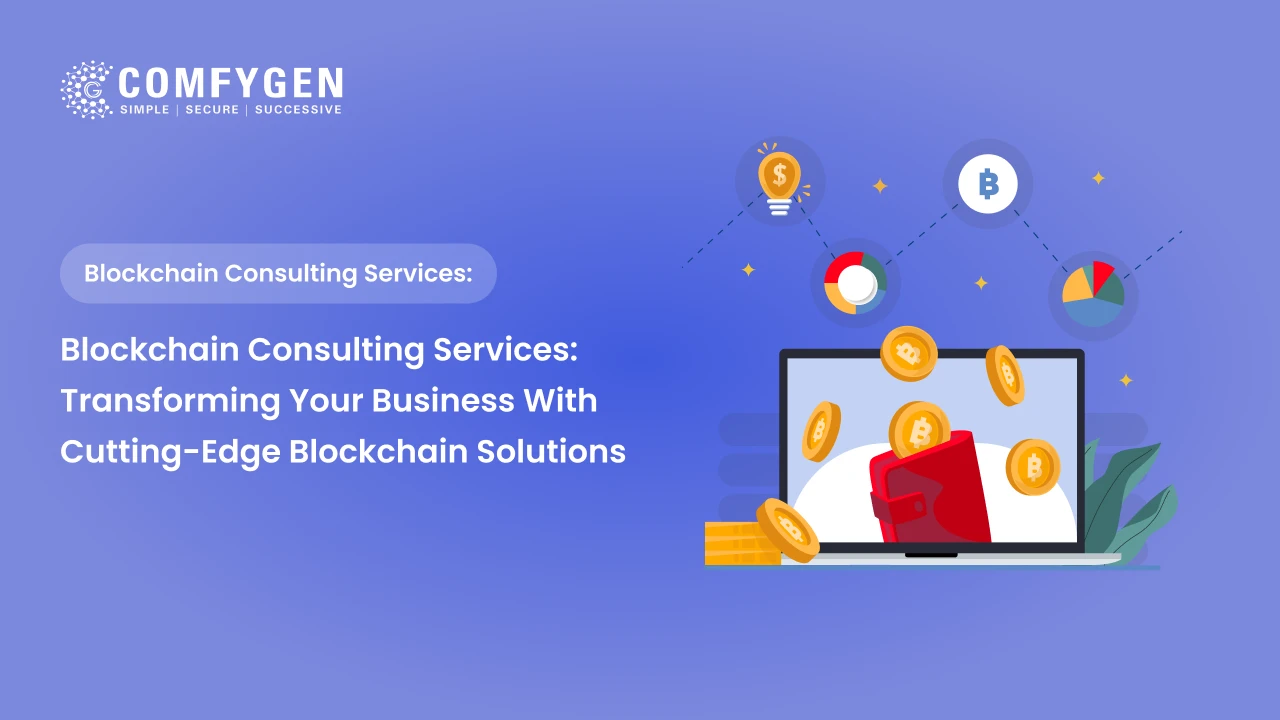
Blockchain Consulting Services: Transforming Your Business with Cutting-Edge Blockchain Solutions
Introduction Blockchain technology is revolutionizing industries by providing secure, decentralized, and transparent solutions. As businesses across the world explore their potential,…

